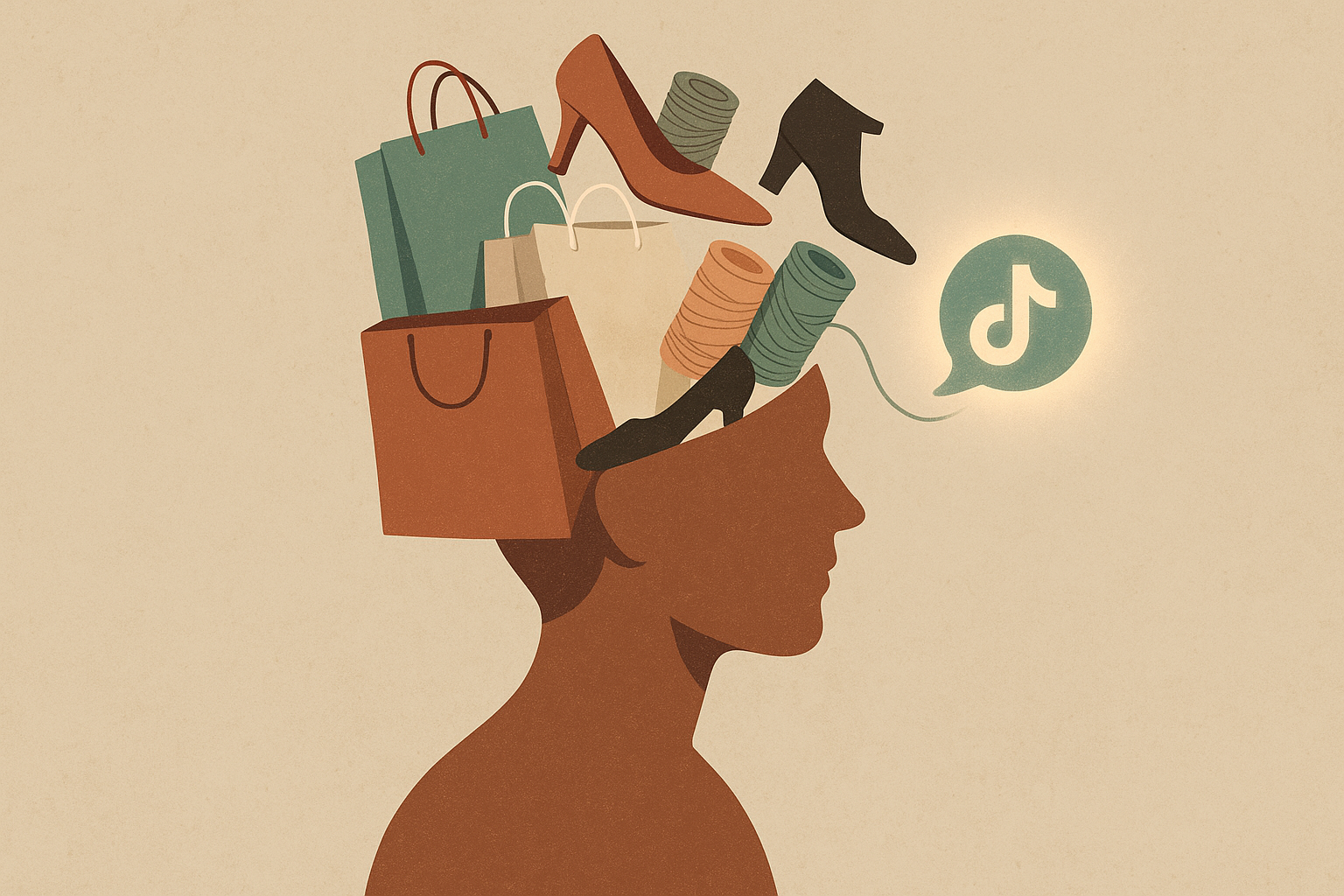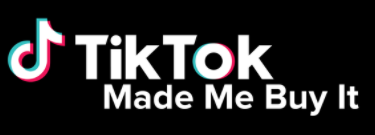TikTok Made Me Buy It: The Psychology of Fashion Impulse Buys
TikTok is more than just an app for dances and funny videos. It has become one of the strongest forces in fashion today. Every day, clothes, shoes, and accessories go viral on TikTok. Millions of people watch, share, and then rush to buy them. This is called “TikTok made me buy it.”
Fashion on TikTok is fast. One moment, a certain pair of UGG boots is everywhere, and the next, it’s a Stanley Cup water bottle or a new Skims dress. These trends happen quickly because TikTok’s algorithm shows videos to millions in just hours. Instead of fashion starting on runways or in magazines, it starts in short videos and spreads instantly.
But why do people buy so quickly? The answer is impulse buying. Impulse buying means purchasing something without much thought. It is not always planned. Sometimes people buy because they feel excited, happy, or afraid of missing out. TikTok makes this type of shopping easy because the app combines entertainment, peer influence, and shopping all in one place.
This blog post looks at why TikTok drives so many fashion impulse buys. It will explain what impulse buying is, how psychology and feelings guide shoppers, and why younger generations are the most influenced. It will also share real examples of viral fashion trends, discuss cultural and social factors, and explore what this means for the future of fashion.
What is “Impulse Buying?”
mpulse buying is when someone makes a sudden choice to purchase something without much planning. Instead of thinking, “Do I really need this?” the person buys right away.
Psychologists say impulse buying often happens because of emotions. When you see something exciting or popular, your brain releases dopamine. Dopamine is a chemical that makes you feel good. Shopping becomes a quick way to feel happy. On TikTok, these good feelings are multiplied because:
The videos are short and exciting.
You see other people showing off the item.
Likes, comments, and shares make the product feel important.
The “For You Page” makes sure you see the same trend again and again.
Impulse buying is not new. People have always bought candy at the checkout or grabbed shoes on sale. But TikTok has made impulse buying bigger and faster. Instead of being in a store, shoppers are online, and the “buy” button is just one click away.
Research shows that social media plays a large role in this. Kapoor, Dwivedi, Piercy, and Williams (2022) explain that social media mixes fun, peer pressure, and instant access, which makes people buy more impulsively. TikTok, because of its design, may be the strongest example of this yet.
The Fashion Marketplace of TikTok
TikTok is not a normal shopping site. It is an entertainment platform, but shopping is built into the culture. The hashtag #TikTokMadeMeBuyIt has over 70 billion views. This shows just how often people connect TikTok with shopping.
Image obtained from the TikTok official website
Why is TikTok so powerful for fashion?
Visual influence: Seeing clothes in motion is more convincing than just a picture.
Trust in creators: People often trust TikTok influencers more than ads. They feel like friends.
Speed: Trends move in hours, not months. By the time magazines cover a trend, it may already be “over” on TikTok.
Demographics: TikTok’s main users are Gen Z and young millennials, who love fashion and are active online.
Some viral fashion examples include:
Stanley Cup water bottle: Turned from a simple drink container into a fashion accessory.
Mini UGG boots: Became a winter must have after countless videos.
Skims and Aritzia basics: Spread across TikTok as “everyday chic” items.
Amazon fast fashion pieces: Items like dupes of expensive brands sell out after trending.
These examples show that TikTok is not just spreading fashion it is selling it in real time.
So Why Do Consumers Follow TikTok Trends?
TikTok is not a normal shopping site. It is an entertainment platform, but shopping is built into the culture. The hashtag #TikTokMadeMeBuyIt has over 70 billion views. This shows just how often people connect TikTok with shopping.
Why is TikTok so powerful for fashion?
Visual influence: Seeing clothes in motion is more convincing than just a picture.
Trust in creators: People often trust TikTok influencers more than ads. They feel like friends.
Speed: Trends move in hours, not months. By the time magazines cover a trend, it may already be “over” on TikTok.
Demographics: TikTok’s main users are Gen Z and young millennials, who love fashion and are active online.
Some viral fashion examples include:
Stanley Cup water bottle: Turned from a simple drink container into a fashion accessory.
Mini UGG boots: Became a winter must have after countless videos.
Skims and Aritzia basics: Spread across TikTok as “everyday chic” items.
Amazon fast fashion pieces: Items like dupes of expensive brands sell out after trending.
These examples show that TikTok is not just spreading fashion it is selling it in real time.
Generational Differences in TikTok Shopping
TikTok shopping habits vary by age:
Gen Z: They are the leaders of TikTok fashion. They thrift, but they also buy fast when something goes viral. They want authenticity and creativity, but they also want to join in trends.
Millennials: They shop on TikTok too, but they tend to be more careful. Many read reviews or compare items before buying. They may choose higher-quality or luxury pieces.
Older generations: They are slower to join TikTok shopping, but their influence is growing. As TikTok becomes more mainstream, older shoppers may start buying through the app as well.
This mix shows that TikTok appeals most strongly to young people, but it is spreading across generations.
Culture, Identity, and Fashion on TikTok
Fashion on TikTok is also about culture and identity. People want to see themselves represented in what they buy. This has led to more inclusive and diverse fashion trends.
Examples include:
Plus size fashion influencers showing affordable, trendy looks.
Gender neutral clothing becoming more popular.
Designers from many backgrounds gaining recognition because TikTok lets anyone go viral.
TikTok gives a voice to groups who may not always be seen in magazines or high fashion. This makes fashion feel more personal and relatable.
What Are The Risks?
Impulse shopping can be fun, but it also has risks.
Overspending: Buying quickly can hurt budgets.
Low quality items: Not all viral products are good. Some are cheap copies.
Waste: Fast trends can lead to waste if people stop wearing items quickly.
This is why some experts say consumers should be more mindful. A quick buy may feel good, but it may not be the best choice long-term.
Let’s Look Into The Future
TikTok is not slowing down. More brands are joining, and more consumers are shopping through the app. But the future may bring changes:
More rules about advertising and disclosure.
Growth of resale and rental fashion alongside impulse buying.
Smarter consumers balancing fun impulse buys with sustainable choices.
In the end, TikTok will continue to shape fashion. It may make trends shorter, faster, and more global. Fashion will not just follow runways it will follow the feed.
TikTok has turned fashion into a fast, emotional, and community driven experience. People buy because of FOMO, social proof, and identity. Gen Z leads the way, but other generations are joining too. TikTok spreads trends across cultures and makes fashion more diverse and exciting.
Impulse buying has risks, but it also shows how powerful consumers are. TikTok is proof that shoppers not just designers now control fashion. Trends do not last for seasons anymore. They last for minutes.
Fashion is no longer waiting on a runway. It is happening on your phone.
Sources:
Kapoor, K., Dwivedi, Y. K., Piercy, N. F., & Williams, M. D. (2022). Social media and impulse buying: A literature review. Journal of Consumer Behaviour, 21(4), 575–589.
McKinsey & Company. (2024). The state of fashion 2024. McKinsey & Company and Business of Fashion.
Business of Fashion. (2023). How TikTok is shaping global fashion trends.

